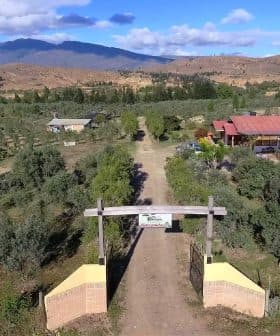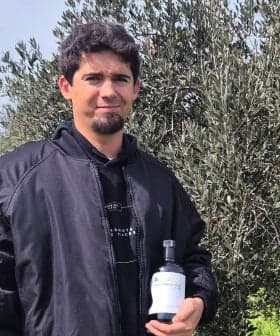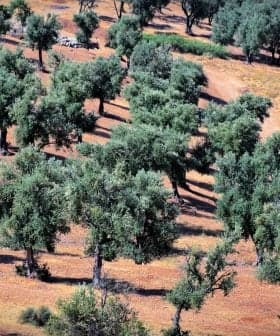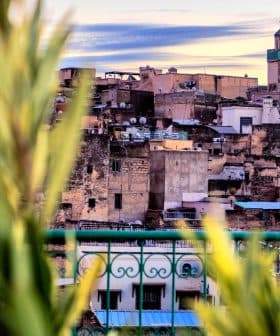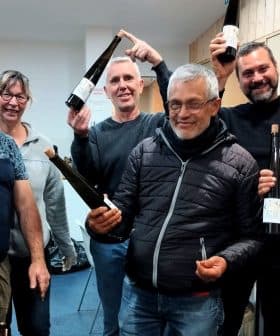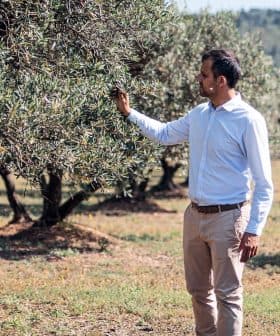 8.7K reads
8.7K readsProducer Profiles
The Secrets to Successful Olive Oil Production in Peru

John Symington, the man behind Oasis Olives, transitioned from the IT world to planting olives in Peru and Australia to capture carbon and generate local employment. Despite facing challenges like high temperatures and political instability in Peru, Symington remains dedicated to the company’s operations and expects production to continue rising with new plantings in Australia.
As producers across the Southern Hemisphere gear up for the fast-approaching 2024 harvest, the man behind Oasis Olives sits in a unique position.
Founder John Symington has followed an unusual path that took him from the world of information technology to planting olives in central Peru and later Australia.
We’ve had to find ways to manipulate the trees to get them to flower reliably because (Peru) doesn’t have cool enough temperatures during the winter.
“My background wasn’t in agriculture. I was in IT,” Symington told Olive Oil Times. “I had a computer software company that I sold and was looking for something worthwhile.”
He wanted to invest in a project that would benefit people and the planet and generate a return on investment. Symington finally settled on planting olive trees to capture carbon and generate local employment in the Peruvian desert.
See Also:In Search of Chill – Cool Nights Needed for Olive Trees in Greece(The name for Oasis Olives comes from the small oases found in the desert of central Peru, indicating the presence of underground water reserves.)
“The project in Peru was proposed to me by someone that I knew, and I was ignorant enough to think, ‘Yeah, let’s go ahead and do it,’” he said.
Originally, Symington planned to be a passive investor. The contact that had presented him with the project proposal also introduced a management and agronomy team, while Symington was to provide the capital.
“I went to Peru periodically, but I saw dead trees everywhere, and it was clear that there were some major problems, so I got involved,” Symington said. “If I was looking at purely this investment, I probably should have would have walked away except for stubborn pride.”

The company takes its name from the oases found in the desert of central Peru. (Photo: John Symington)
Symington hired a new local manager and agronomist to run the operation but also decided that he needed to learn more about olive farming and oil production himself.
“I bought a run-down grove in Australia to restore and go through the whole process of harvesting, putting in a mill and producing oil before we got to that same stage in Peru so I could learn in Australia and make sure things were being done properly in Peru,” he said.
The first Australian olive grove was planted near Kialla, Victoria, a few hours north of Melbourne. Since then, Oasis Olives has also started farming and milling operations in Western Wimmera, slightly less than 400 kilometers west of Kialla, and Mallee, South Australia.
About half of the company’s olive oil is produced in Peru – 700,000 liters in a good year. Most of this production is exported in bulk to the United States and Australia.
Symington said the idea to plant near Pisco, about 500 kilometers northwest of the country’s historic olive growing region, was recommended by local authorities and his first agronomist mainly due to water availability in the area.

While olives are not common in Pisco, the area is better known for its historic wine production. (Photo: John Symington)
“I went out there, and we talked to the authorities,” he said. “Their advice was to go to Pisco principally because water was available there. Water is essential in that part of Peru because it doesn’t rain, so you’ve got to have access to the aquifers.”
“As it happened, it’s not a good area, and we’ve had to find ways to manipulate the trees to get them to flower reliably because it doesn’t have cool enough temperatures during the winter,” Symington added.
Initially, the agronomist sought olive varieties that require fewer chill hours, knowing early on that high winter temperatures could be a problem. However, the varieties he selected did not bear fruit.
“We discovered by accident that if you girdle the trees, you can give them a bit of a push to compensate to some extent for lack of chilling,” Symington said.
Girdling the olive trees entails cutting off a thin strip of bark all the way around the trunk. “That is how the canopy feeds the root system,” Symington said. “Girdling traps some of the energy in the canopy at about the time of flowering, and that’s enough to push the tree into giving you some decent flowering.”

Girdling olive trees involves cutting a strip of bark from the trunk, which traps energy in the canopy and mitigates the impacts of the lack of chill hours. (Photo: John Symington)
Symington accidentally stumbled upon the solution after walking through the olive grove one Sunday. “I found a branch that had been caught between two other branches,” he said. “The bark had been rubbed off, and it was the only branch on the tree with decent flowering.”
After consulting with Leandro Ravetti, now the co-chief executive of Cobram Estate, Symington learned that girdling was practiced in other parts of the olive growing world to achieve one-off production increases but was not widely used as a method to mitigate the impact of a lack of chill hours.
Oasis Olives now uses the practice regularly to ensure production in its Peruvian groves. “Some other growers in Peru have adopted it as well,” Symington said.
While the company has not needed to girdle in its Australian groves yet, Symington said Peru’s higher annual average temperature provides a peek at what the olive groves in Australia could face in the most extreme climate change scenarios.
“Being in Peru, where we do have an issue with warm temperatures, perhaps is helping us to be more aware in Australia of what climate change could bring us in the future,” he said.
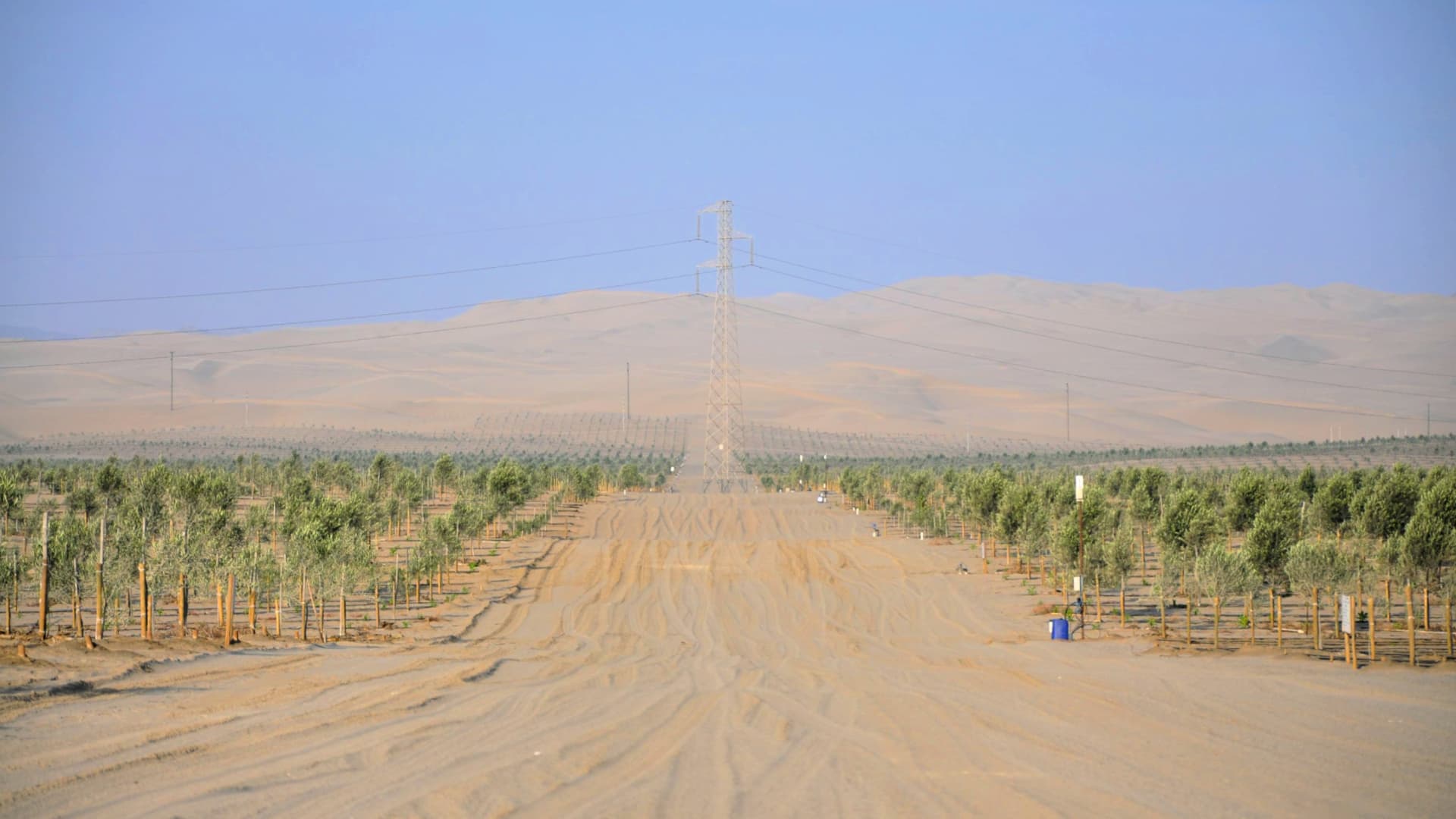
Growing olives in the desert of Peru has given Symington a glimpse of potential challenges his Australian groves could face in some worst case climate scenarios. (Photo: John Symington)
Along with high winter temperatures, Symington cited political instability as one of the challenges Oasis Olives faces in producing olive oil in Peru.
“We’ve had instances in Peru where our workers haven’t been able to get to the farm because there have been rioters blocking the highway,” he said. “It is certainly something we don’t have to deal with in Australia, and it does make Peru a little bit more unpredictable and problematic to manage.”
Ahead of the current harvest, Oasis Olives is also contending with rising energy prices in Peru after a short-term lack of rain in the mountains lowered the availability of the country’s previously prolific hydroelectricity reserves. Meanwhile, higher gas prices also pushed up the price of the main alternative power source.
While labor costs are much lower in Peru, Symington said they average out with those experienced by Oasis Olives’ groves in Australia due to lower productivity and the lack of mechanization.

John Symington and his team in Peru. (Photo: John Symington)
“Labor costs are low in Peru, but you need a lot more labor,” he said. “We have quite a lot of staff in Peru for what we do,” he said. “There are some jobs we don’t mechanize as much in Peru as in Australia.”
“We also need to have some security staff. We also have a kitchen and kitchen staff to cook people breakfast and lunch,” he added.
Along with the extra staff, Symington said there are other administration costs and the complicated taxation system to navigate, requiring a larger office staff. “All of those things add up,” he said.
While rising costs have been offset somewhat by increasing global olive oil prices at origin, Symington said Oasis Olives has not enjoyed the full benefit of the price hikes.
“Most of our oil is sold in advance, and we had some uplift, but the small increases we saw for our last season were probably covering increases in fertilizer, labor, diesel now also power costs,” he said.
“We were still a long way below market prices because we’d set prices in advance and also try to cushion existing customers somewhat from the impact,” Symington added. “We’re hoping that the prices will stay high for a little while, and we can start to benefit. Until now, the benefit has been minimal.”
Despite the original plan to be a passive investor in Peru, Symington remains dedicated to the company’s olive farming and milling operations there.

While Oasis Olives produces about 700,000 liters of olive oil each year, the 2024 harvest is expected to be far lower. (Photo: John Symington)
Until the Covid-19 pandemic, he would visit twice yearly to inspect the groves before the harvest and during the milling season.
However, these biannual visits ended at the onset of the pandemic in 2020, which ravaged Peru. According to Johns Hopkins University’s coronavirus resource center, Peru experienced the highest number of deaths attributed to the disease per 100,000 people (665.84) and the highest observed case-fatality ratio (4.9 percent) globally.
Between 2020 and 2023, when the center stopped collecting data, Peru endured 219,539 deaths. “One of our senior staff members died of Covid-19, and everybody lost friends and relatives to Covid-19,” Symington said.
Still, the olive harvest and production could continue due to the company’s status as a food producer.
Symington attributed the company’s ability to overcome the challenges of the 2020 harvest to its milling technician, Alberto Serralha. “His Portuguese team and our local team made sure the harvests were completed successfully during Covid-19,” he said.
“Alberto, in particular, organized visas for his team to get them into a shutting-down country and kept them going in Peru when other foreigners were catching evacuation flights, not knowing whether there would be more evacuation flights to get them home,” Symington added. “They were very lucky to get out on a Dutch government evacuation flight right at the end of the harvest.”
Looking ahead to 2024, Symington expects a poor harvest in Peru. Officials in the country expect production to be quite low, ranging from 700 to 1,000 tons.
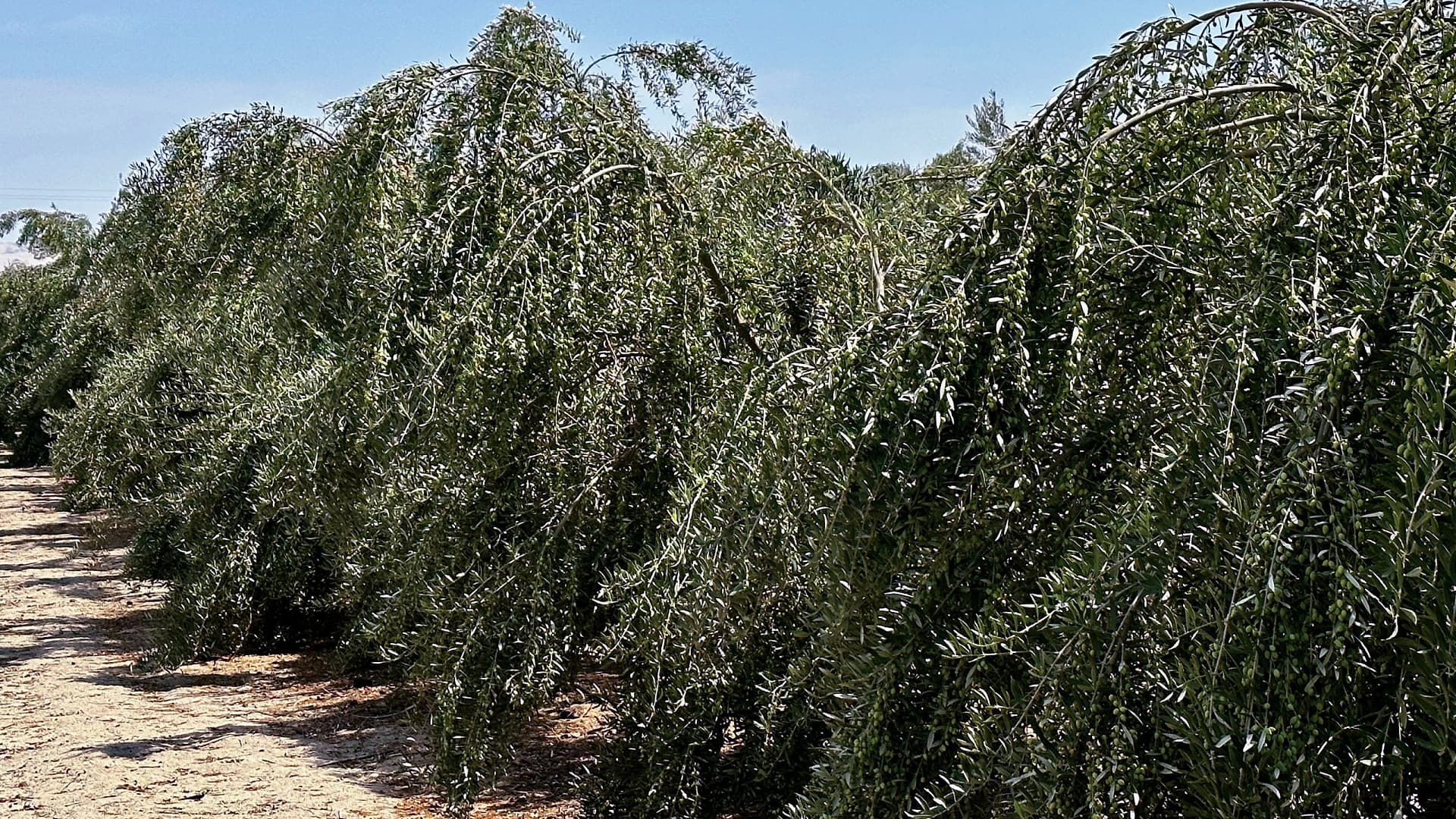
Despite the challenges, Symington is optimistic about the future for Oasis Olives in Australia and Peru. (Photo: John Symington)
Meanwhile, Symington expects the harvest in Australia to be “significantly down” from last year as well, partly due to many groves entering an ‘off-year’ in the natural alternate bearing cycle of the olive tree.
“There was a late frost about a week before flowers were opening that has impacted production throughout South Australia,” he added. “Our crops are not disastrously impacted, but they’re down. A lot of other people are down more than us.”
Despite this season’s expected setbacks, Symington is confident that production will continue to rise, especially as he plants more in Australia.
“We’ve done a lot of new planting in Australia,” he said. “We’re still ramping up production in Australia, which will be bigger than in Peru. But at the moment, they’re probably about on par with each other.”
Despite his admitted naivete when entering the industry 15 years ago, Symington has no regrets and looks forward to the future.
“It’s a good industry to be in, but people are not in the industry to make a quick buck,” he said. “We’re making a healthy product. We’re making a good quality product, and we are profitable.”
“So I’m happy to be in the olive oil industry, and I feel positive about where we are at the moment, and I feel positive about where we’re going,” Symington concluded.


